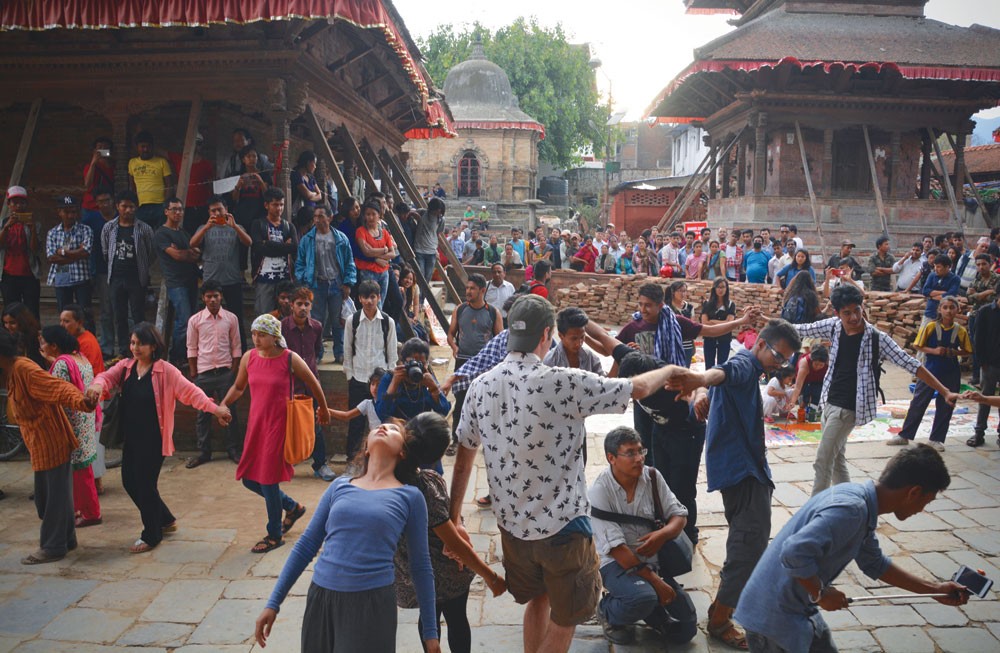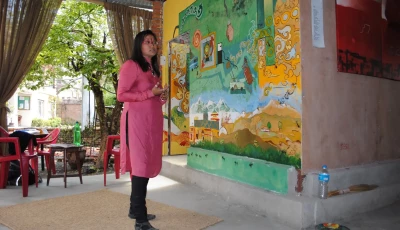
Art for a New Nepal: Ashmina Ranjit’s Synergetic Practice
“If the world has imagined and experienced Nepal and its people as an idyllic Shangri-la,” writes art historian Dina Bangdel, “the brutal aftermath of the April 2015 earthquake forever shattered that dream.” Social media and television feeds have since been inundated with images of Nepal’s cultural heritage in ruins; temples and palaces reduced to piles of brick and timber, presenting what is sure to be an arduous process of reconstruction. However, there is another aspect of Nepal’s cultural heritage that has not received the attention it deserves from the international community, and it will find ways to flourish as the country recovers. Nepal is home to an industrious, resourceful and politically contemporary art scene, primarily based in the sprawling, cosmopolitan capital of Kathmandu.
“If the world has imagined and experienced Nepal and its people as an idyllic Shangri-la,” writes art historian Dina Bangdel, “the brutal aftermath of the April 2015 earthquake forever shattered that dream.” Social media and television feeds have since been inundated with images of Nepal’s cultural heritage in ruins; temples and palaces reduced to piles of brick and timber, presenting what is sure to be an arduous process of reconstruction. However, there is another aspect of Nepal’s cultural heritage that has not received the attention it deserves from the international community, and it will find ways to flourish as the country recovers. Nepal is home to an industrious, resourceful and politically contemporary art scene, primarily based in the sprawling, cosmopolitan capital of Kathmandu.
-
-



.jpg)
